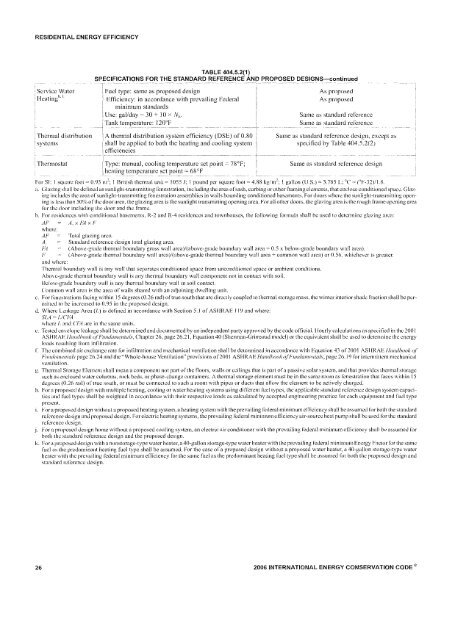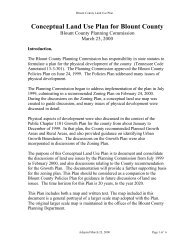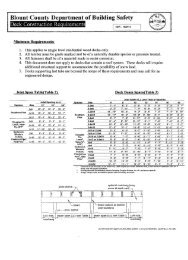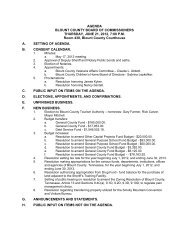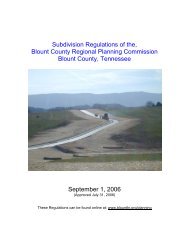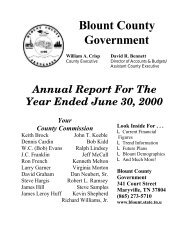2006 INTERNATIONAL ENERGY CONSERVATION CODE ...
2006 INTERNATIONAL ENERGY CONSERVATION CODE ...
2006 INTERNATIONAL ENERGY CONSERVATION CODE ...
You also want an ePaper? Increase the reach of your titles
YUMPU automatically turns print PDFs into web optimized ePapers that Google loves.
RESIDENTIAL <strong>ENERGY</strong> EFFICIENCY<br />
TABLE 404.5.2(1)<br />
SPECIFICATIONS FOR THE STANDARD REFERENCE AND PROPOSED DESIGNS-continued<br />
Fuel type: same as proposed design<br />
Efficiency: in accordance with prevailing Federal<br />
minimum standards<br />
Use: gal/day c_ 30 + lOx tVl"<br />
Tank temperature: 1200F<br />
As proposed<br />
As proposed<br />
Same as standard reference<br />
Same as standard reference<br />
A thermal distribution system efficiency (DS!::) of 0.80 Same as standard reference design. except as<br />
shall be applied to both the heating and cooling system specified by Table 404.5.2(2)<br />
efficiencies<br />
Type: manual, cooling temperature set point > nOF; Same as standard reference design<br />
heating temperature set point = 68°F<br />
.... ------- ------ ~ --._-,,------ ..•._---_._<br />
For SI: I square foot = 0.93 m'; I British thermal unit = 1055 J; I pound per square foot = 4.88 kg/m 2 ; I gallon (U.S.) = 3.n5 L; °C c~ eF-32)/1.8.<br />
a. Glazing shall be defined as sunlight-transmitting fenestration, including the area ofsash, curbing or other framing clements, that enclose conditioned space. Glazing<br />
includes the area ofsunlight-transmitting fenestration assemblies in walls bounding conditioned basements. For doors where the sunlight-transmitting opening<br />
is less than 50%, ofthe door area. the glazing area is the sunlight rransmirringopening area. For all other doors. the glazing area is the rough frame opening area<br />
tor the door including the door and the frame.<br />
b. For residences wilh conditioned basements, R-2 and R-4 residences and townhouses, the followiug formula shall be used to determine gla:ring area:<br />
AI-' A, xF4 x I-'<br />
where:<br />
AF Tolal glazing area.<br />
A, Standard reference design total glazing area.<br />
f",j (Above-grade thermal boundary gross wall urca j/rabovc-gradc boundary wall area + 0.5 x below-grade boundary wall area).<br />
F (Above-grade thermal boundary wall areal/labove-grade thermal boundary wall area + common wall area) or 0.56, whichever is greater.<br />
;ll1d where:<br />
Thermal boundary wall is any wall that separates conditioned space hom unconditioned space or ambient conditions.<br />
Above-grade thermal boundary wall is any thermal boundary wall component not in contact with soil.<br />
Below-grade boundary wall is any thermal boundary wall in soil contact.<br />
Common wall area is the area of walls shared with an adjoining dwelling unit.<br />
c. For fenestrations facing within 15 degrees (0.26 rad) oftrue south that are directly coupled to thermal storage mass, the winter interior shade traction shall be permitted<br />
to be increased to 0.95 in the proposed design.<br />
d. Where Leakage Area (I,) is defined in accordance with Section 5.1 ofASIIRAE 119 and where:<br />
SLA =!.ICI-'A<br />
where I, and CF4 are in the same units.<br />
e. Tested envelope leakage shall be determined and documented by an independent party approved by the code official. IIourly calculations as specified in the 200 I<br />
ASHRAF l landbook ofFundamentals, Chapter 26. page 26.21, Equation 40 (Shcnnan-Grirnsrud model) or the equivalent shall be used to determine the energy<br />
loads resulting from infiltration.<br />
f The combined air exchange rate for infiltration and mechanical ventilation shall be determined in accordance with Equation 43 of200J ASIIRAE Handbook of<br />
Fundamentals page 26.24 and the "Whole-house Ventilation" provisions of200 I ASHRAE Handbook ofFundamentals, page 26.19 (or intermittent mechanical<br />
vcnulation.<br />
g. Thermal Storage Element shall mean a component not part ofthe floors. walls or ceilings that is part ofa passive solar system, and that provides thermal storage<br />
such as enclosed water columns, rock beds. or phase-change containers. A thermal storage element must be in the same room as (cnestration that (aces within 15<br />
degrees (0.26 rad) of true south, or must be connected to such a room with pipes or ducts that allow the element to be actively charged.<br />
h. For a proposed design with multiple heating, cooling or water heating systems using different fuel types, the applicable standard reference design system capacilies<br />
and fuel types shall be weighted in accordance with their respective loads as calculated by accepted engineering practice for each equipment and fuel type<br />
present.<br />
i. For a proposed design without a proposed heating system. a heating system with the prevailing federal minimum efficiency shall be assumed 1'01'both the standard<br />
reference design and proposed design. For electric heating systems, the prevailing federal minimum efficiency air-source heat pump shall be used till'the standard<br />
reference ttcsign,<br />
j. For a proposed design home without a proposed cooling system. an electric air conditioner with the prevailing federal minimum efficiency shall be assumed (or<br />
both the standard reference design and the proposed design.<br />
k. For a proposed design with a nonstoragc-rype water heater, a 40-gallon storage-type water heater with the prevailing federal minimum Energy Factor for the sam"<br />
[ucl as the predominant heating fuel type shall be assumed. For the case of a proposed design without a proposed water heater, a 40-gallon storage-type water<br />
heater with the prevailing Icderal minimum efficiency 1'01'the same fuel as the predominant heating fuel type shall be assumed lor both the proposed design and<br />
standard reference design.<br />
26<br />
<strong>2006</strong> <strong>INTERNATIONAL</strong> <strong>ENERGY</strong> <strong>CONSERVATION</strong> <strong>CODE</strong>®


